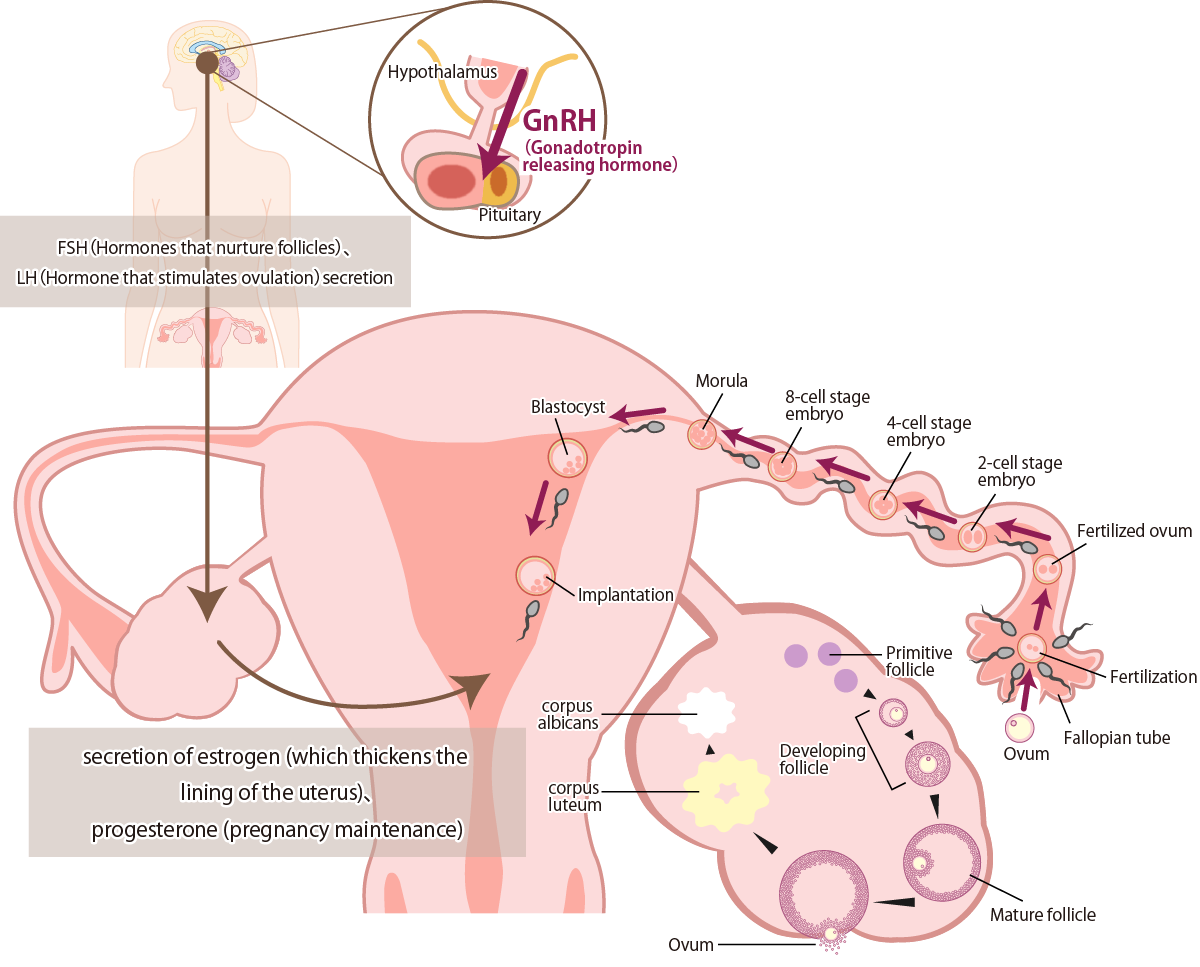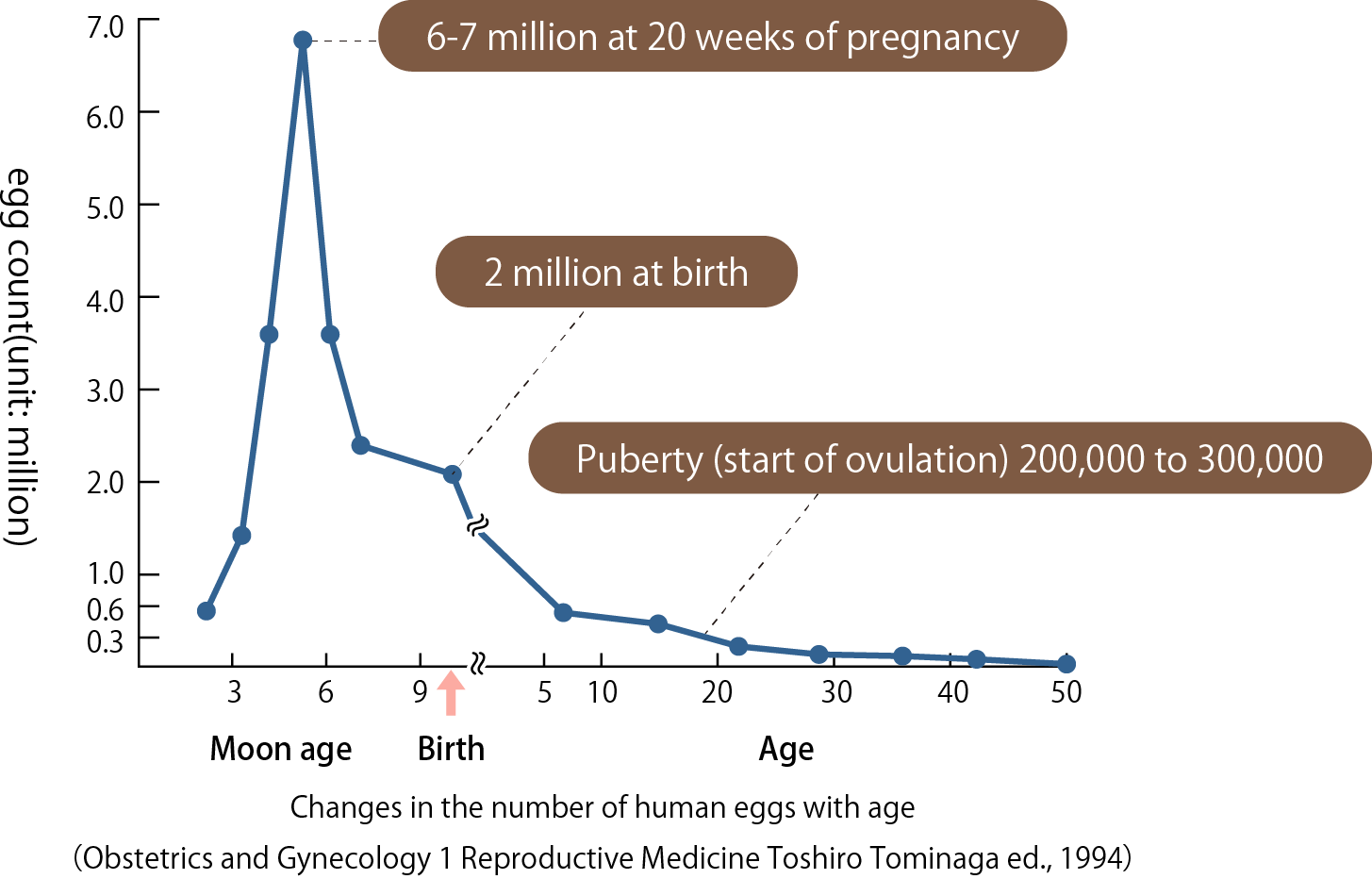

The formation of oocytes in a woman’s body begins before she is even born, while she is still a fetus.
The number of cells that give rise to oocytes peaks at about 7 million during the fetal period, and no new cells are created after that.
Most of these are absorbed during the fetal period and the number decreases to about 2 million at birth.
After that, pre-oocyte cells continue to decrease steadily, reaching about 200,000 to 300,000 by the time of puberty.

Meiosis is repeated twice to produce a mature oocyte, but stops once in the middle of the first meiosis as an immature oocyte.
Oocytes form units with the surrounding granulosa cells – that is, primordial follicles.
When puberty begins due to hormones, about 1000 dormant primordial follicles awaken each month and develop into primary follicles, secondary follicles, preantral follicles, and antral follicles.
The number of follicles decreases because some of them stop growing.
The development of follicles and oocytes progress in synchronization, and one mature oocyte is finally ovulated.
Menopause occurs when the follicle in the ovary does not develop and ovulation does not occur.
From menarche to menopause, you have the opportunity to become pregnant once a cycle, but the best time to get pregnant is limited.